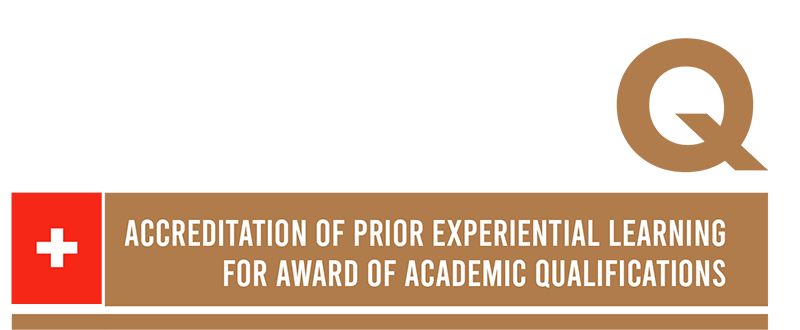
Validation of Prior Learning (VPL) as a career-guidance tool
Background
One of the aims of Validation of Prior Learning (VPL) is to promote personal development of individuals and to strengthen human capital management within private and public institutions. VPL has also been an important means for realising labour market suitability or employability.
For people already employed, VPL can help to further their competences. VPL can also help to identify the overall stock of competences and qualifications in an organisation, thus making it easier for employers to invest in the training of its employees. The training becomes more profitable to invest in for the organisation when it is expressed in terms of national qualifications or industry sector standards, which employers and employees regard as relevant in the changing world of work. Also, in the case of people who become redundant, VPL can help to find jobs that are suited to their current competences.
In the Netherlands, both private and public sector organisations may offer VPL if they are registered as a VPL provider with the Kenniscentrum EVC (Knowledge Centre) and adhere to the Quality Code agreed to by the government and social partners. Currently, there are 69 organisations providing VPL (Register EVC, 2013).
Procedures and processes
The VPL procedure in the Netherlands normally entails the following stages:
- Information, advice and guidance for candidates, employers or organisations;
- Candidates decide on the qualification or sector standard against which their competences are assessed;
- Documentation of competences through the portfolio method is supported by a facilitator;
- Validation of competences/assessment by the assessors;
- The VPL report includes a description of results and accreditation by the assessor, together with advice on the further personal development of individuals in relation to their defined career goals.
Assessment includes a formative recognition and a summative recognition:
- The ‘Ervaringsprofiel’ (Competence Profile) is a formative procedure that sets up a personal portfolio. It aims at validation of a candidate’s generic competences. It advises on steps towards accreditation or personal development. It also points to procedures for obtaining a specific qualification or diploma.
- In the case of summative recognition, candidates who want to reflect their prior learning outcomes in relation to a qualification have to fill in a portfolio in which they can demonstrate how their learning experiences match with the competences in the qualification they have chosen. In an assessment they are judged and given a report called the Ervaringscertificaat (Certificate of Experience) stating all the learning outcomes that match with the learning outcomes in a qualification. With this Certificate of Experience, they can approach an awarding body (examination committee) of a school or university. Only the awarding body is allowed to convert the Certificate of Experience into an official exemption and on the basis of this advice it is possible to achieve a partial or full qualification.
A mix of assessment methods is used depending on the situation. This mix includes portfolio-assessment, interviews, observations and other forms of testing.
Generally, VPL practitioners are recruited from different professional groups (teachers, trainers, counsellors or personnel managers):
- VPL practitioners fulfil various functions such as assessors, portfolio-advisers, developers of VPL procedures based on national standards, or trainers of assessors and advisers;
- According to the Quality Code for VPL, only trained professionals can be VPL assessors/advisors and their competences must be documented;
- Guidance is a responsibility of any VPL provider in helping candidates to fill in their portfolios once a specific standard has been chosen. VPL providers receive training on how to guide candidates in a professional way through the VPL procedure and give candidates advice on the opportunities open to them;
- The CH-Q System of Managing Competences (a Swiss vocational qualifications programme that has developed tools to document skills) is used to address issues in career management. This system contains the competences for portfolio development, the formal and non-formal evidences needed for qualifications, the application forms, as well as the special instruments to prepare validation and accreditation procedures (Schuur, 2011; ww.ch-q.nl). The CH-Q System has helped several candidates to find jobs or start a study programme at a VET school or a university;
- A regional system for the dissemination of information, career guidance and training has been set up with 35 local career guidance offices (Leer Werk Loketten) across the country. These offices apply VPL as a career-guidance tool by actively linking training providers to employees and employers;
- Information and guidance practitioners work independently of the educational sector and the world of work. They focus not only on employability or gaining a qualification, but also on the benefits VPL has for the employer or organisation as well as for the individual.
Private sector stakeholders play an important role in the implementation of VPL by customising work-based learning, providing guidance in the workplace, and by valuing the workplace as a learning environment.
Outcomes and ways forward
With regard to the next steps to be taken, the following issues need to be highlighted:
- There is growing awareness in private and public institutions alike that learning on-the-job or via other non-formal learning situations can deliver as significant competences as learning within formal (classroom-based) situations.
- VPL provides valuable feedback to educational providers on the content and methods of both formal and non-formal/informal learning.
- More and more flexible and customised training courses are being offered by private and public sector institutions by using VPL to gauge the existing skills levels of individuals.
- By using VPL, private and public sector organisations are increasingly formulating existing and required demand for competences in a more effective way. It is also enabling educational institutions to integrate VPL in their teaching and learning processes.
- VPL has encouraged employees in taking the initiative to independently shape their own paths for career and personal development.
References
Schuur, C.C. M. 2011. Life and work demand for a meaningful self-management of competences.
Stoel, D., and Wentzel, E. 2011. Beloften, feiten en ongekende mogelijkheden.Amsterdam, Profitwise.
Wageningen, Foundation Competentie Management CH-Q NL/B.
Source: UNESCO UIL











